#大石樹
Text

45 notes
·
View notes
Text
【黒執事4期】アニメ無料動画配信まとめ|見逃し&再放送や1話~全話フル視聴サイトは?評価感想や花江夏樹など声優も|寄宿学校編
黒執事4期の見逃し配信や無料視聴動画サイトを紹介しますよ!
どの配信サイトがいいのか特徴とともに比較しておすすめしていますー!
アニメ「黒執事4期」の無料動画を1話〜全話フル視聴するのにおすすめな方法はコレ!
この作品を配信中の
\おすすめ公式動画配信/
配信サービス
配信状況
無料期間
アニメ「黒執事4期」を見逃し動画配信サイトで無料視聴する方法
作品概要
放送
2024年・春
話数
未定
制作会社
CloverWorks
監督
岡田堅二朗
声優
セバスチャン・ミカエリス:小野大輔|シエル・ファントムハイヴ:坂本真綾|エドガー・レドモンド:渡部俊樹|ロレンス・ブルーアー:榎木淳弥|ハーマン・グリーンヒル:武内駿輔|グレゴリー・バイオレット:橘龍丸|モーリス・コール:堀江瞬|クレイトン:石毛翔弥|チェスロック:戸谷菊之介|ヨハン・アガレス:速水奨|マクミラン:白石晴香
…

View On WordPress
#2024年アニメ#2024年春アニメ#CloverWorks#SF/ファンタジー#ホラー/サスペンス/推理#坂本真綾#堀江瞬#小野大輔#岡田堅二朗#戸谷菊之介#榎木淳弥#橘龍丸#武内駿輔#渡部俊樹#白石晴香#石毛翔弥#速水奨#黒執事
4 notes
·
View notes
Text
Neseベリーダンス15周年無事終了!
2024年1月28日、岐阜のサラマンカホールにて
ベリーダンサーのNeseさんが主宰されてるコンサートです。
私もおかげさまで毎年楽しく、チャレンジさせていただいてます。4回目になり、もう初心者ぶるのはご法度だと思って、この時期、たくさんのアラブ音楽、トルコ音楽、2時間、3時間体にリズムを入れていました。
今回はなんと少しソロ演奏もあり、客席からステージへダンサーさんと踊る演出もあり、楽しかったです。いろいろアテンドしてくださりありがとうございました。

ネイ、サズ、タンブール、カーヌーン、ウード、レク、ダラブッカ、アコーディオン、これだけオリエンタルな楽器が集まりました!
感無量。




#Neseベリーダンサー#Nicoleベリーダンサー#Miliaベリーダンサー#Neseベリーダンススタジオ#サラマンカホール#石田秀幸ネイ#石田美香サズ#鈴木未知子カーヌーン#松本みさこアコーディオン#森良太ダラブッカ#上島勇樹レク#大橋沙知子ウード#廣石美菜子カーヌーン
0 notes
Text
有別於傳統對於菅原神社、天滿宮的普遍印象,擁有著無比巨大、立派的御神木、銀杏與自豪的力石,更是超過573年古老歷史的「下代菅原神社」!
#巡日#旅行#出國#學問之神#力石#御神木#大樟樹#銀杏#下代菅原神社#城山下代#熊本#熊本自由行#巡日旅行攝#Japan#Travel#Shrine#クスノキ#にっぽんこく#Kumamoto#Kyushu#RoundtripJp
1 note
·
View note
Text
我が家の家紋 世界の殿方達に捧ぐ!
Genden-TukuRich®️の世界へようこそ!VOL.248
家紋!
これがあるのは日本だけであろうか?
すごく気になって調べてみた。
我が家の家紋は丸に三つ銀杏であった。
上記の家紋
起源は、一億五千年前に遡る。長寿の木で樹齢が一千年を超えるものは多くある様だ!
生きた化石とも言われている。
銀杏は水分を多く含むため火災にも強く火に焼かれても簡単には枯死しない。
火災の後には一番に新芽が出るほど生命力が強いとも言われている。
寺や神社にも防火林として植樹されていた。
長寿と生命力の強さ!!
意味合いで家紋して用いられる様だ!
葉の形が鴨の水掻きに似ている。鴨脚樹(イチョウ)
種を撒いても孫の代まで実らない 公孫樹(イチョウ)
異朝と言う響から他国の賓客を迎え入れる喜びを瑞祥(めでたい印)として表した!
黒の部分を中心に見ると銀杏の葉の形が浮かび上が…

View On WordPress
0 notes
Text
ときの、日本の湯川秀樹博士、ノーベル物理学賞は、いうた! 少数意見の尊重を!それこそが民主主義の最低限や!実にそう思う!
極端な、終末論がマスコミを賑わせた。未来はどうなる?激しく変わろうと。大多数の人は同じような生活がいつまでも続くと信じた。予想外のことがしばしば起こる。露偽装?クーデター。日本の湯川博士は半ば予知しとった。なぜなら、それが、それこそがノーベル物理学賞だからだ。なお、タイトルにあっては、少数意見。おそらくは、politlco womanなどが隠したい真実や。1977。忘れちゃいまった?ノーベル物理学賞を?ぶらぶらさん、やっておまった!日本のノーベル物理学賞、カミオカンデを。その場で、かくまるへの公私混同発言が出た。まさに、蟻地獄。かくまる、のや。不都合な真実だけ、切り捨てたら、あかん。そう、湯川博士は、いいたかったんや。はて、これに故安倍晋三元首相らは、何と反論するか?仲間もや!★湯川博士はすでに死没。Nobel Physics winner, Dr. Yukawa Hideki has said that the opinions of minority should be respected in 1977.How is Japan and has been?Minimum of Post-war JPN Democracy!日故湯川秀樹博士既発表了1977年一篇文章称少数意見。他在其書物里強調了応該最大限地尊重少数意見。他獲得了Nobel Physics Prize.他出身校是日京大。香港、西蔵、新疆是左?人家知道西蔵亡命大統領最近発言。
#偽装#偽勅#GHQ#nobel prize#物理#physics#湯川秀樹#京都府立大学#HK#ダライ・ラマ#中国秘密警察#法輪功#大紀元#池尻大橋#孔子学院#成城#桜美林#善通寺#KMT#蒋介石#文春オンライン#文春#週刊文春#south china morning post
0 notes
Photo

浜益エリア🚀巨木探訪🌴😁気になる大きめの木はざっくりメジャーで計測しつつ👷⚖…幹周り4Mクラスはざら⚡厳密(な測り方)じゃないけど6M越えもあって夢が膨らむ😅もしや樹齢1000年クラスだったりして💫大きな木っていいね💕魂というかパワー?存在感がスゴイ✈まだ知られざる巨木の存在に想いを馳せつつ…下山ご飯は味噌チャーシュー🍜✨みなさま〜ありがとうございました🙏 #石狩 #浜益 #ミズナラ #推定樹齢 #巨木 #大木 #巨樹 #探訪 #黄金山 #浜益温泉 #セミの抜け殻 #花畔 #ラーメンの音むら #味噌チャーシュー麺 #石狩手稲線サンセット #浜益富士 #イチイ巨木 #ミズナラ巨木 #石狩手稲線 #オリンピアナイター照明 #巨木探訪 #今季初熊スプレー携行したけど足跡みかけず #暑寒別天売焼尻国定公園 (Shokanbetsu-Teuri-Yagishiri-Quasi-Nationalpark) https://www.instagram.com/p/CphrlChP-Ds/?igshid=NGJjMDIxMWI=
#石狩#浜益#ミズナラ#推定樹齢#巨木#大木#巨樹#探訪#黄金山#浜益温泉#セミの抜け殻#花畔#ラーメンの音むら#味噌チャーシュー麺#石狩手稲線サンセット#浜益富士#イチイ巨木#ミズナラ巨木#石狩手稲線#オリンピアナイター照明#巨木探訪#今季初熊スプレー携行したけど足跡みかけず#暑寒別天売焼尻国定公園
1 note
·
View note
Photo
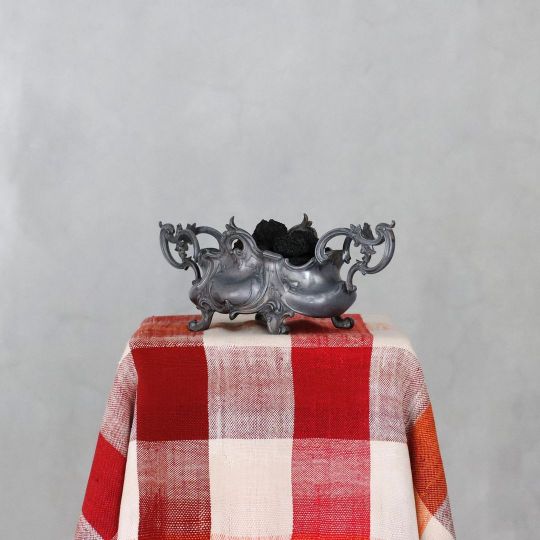
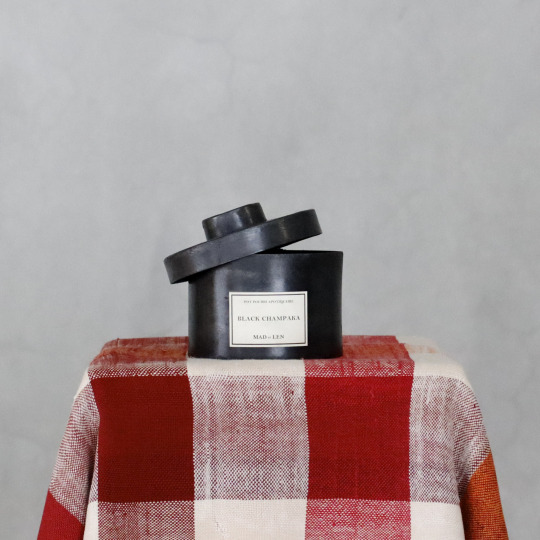
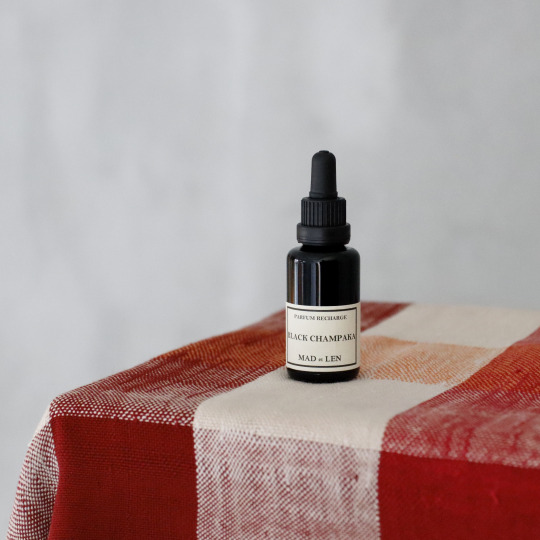
MAD et LEN
Pot Pourri Apothicaire
Lava Rock / Vegetal Amber
"BLACK CHAMPAKA"
¥22,000 tax incl.
Pot Pourri Recharge Oil 30ml
"BLACK CHAMPAKA"
¥11,000 tax incl.
Antique Jardiniere
circa 1900’s
W33 x D13 x H13.5cm
¥25,300 tax incl.
www.v-i-s-i-o-n-s.com
#visions#antique_osaka#osaka_kitahama#madetlen#roomfragrance#potpourri#vegetalamberpourri#lavarockpourri#rechargeoil#blackchampaka#antiqueflowerpot#pewterflowerpot#internationalshipping#マドエレン#マドエレン大阪#マドエレン入荷#ルームフレグランス#天然樹脂ポプリ#溶岩石ポプリ#ポプリリチャージオイル#ブラックシャンパカ#アンティークピューター植木鉢#通信販売可能#ヴィジョンズ#アンティーク大阪
0 notes
Photo

Survival Science! 🍃Finally have a copy of #DrStone #ドクターストーン volume 19 by #RiichiroInagaki #稲垣理一郎 and #Boichi Yay! can't wait for more #Anime #Manga #Otaku #VizMedia #アニメ #マンガ #オタク #SenkuIshigami #YuzuhiraOgawa #TaijuOki #ShishioTsukasa #GenAsagiri #Chorme #石神千空 #大木大樹 #小川杠 #獅子王司 #クロム https://www.instagram.com/p/Cm3HYsbr6_B/?igshid=NGJjMDIxMWI=
#drstone#ドクターストーン#riichiroinagaki#稲垣理一郎#boichi#anime#manga#otaku#vizmedia#アニメ#マンガ#オタク#senkuishigami#yuzuhiraogawa#taijuoki#shishiotsukasa#genasagiri#chorme#石神千空#大木大樹#小川杠#獅子王司#クロム
0 notes
Text
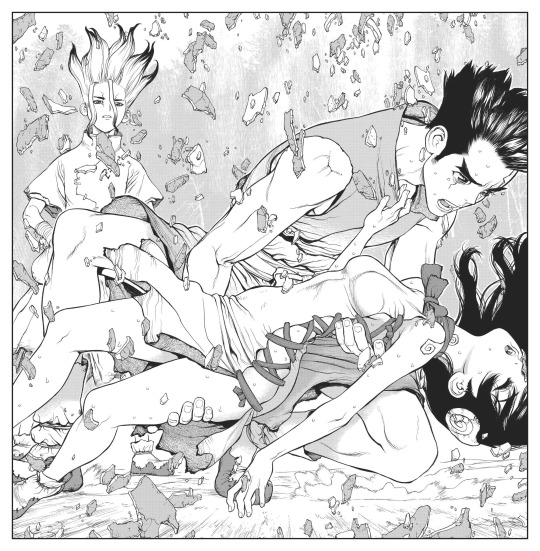
32 notes
·
View notes
Photo

怒髪天さんのMV 撮影 ヒロキチ ゾンビで出演! ゾンビ映画が大好きなため うれしかった❗️ かっこいい増子兄さん 怒髪天の兄さん方 宝物の写真です。 ありがとうございましたm(_ _)m MVは、かっこ良く!面白い! 是非!観てください^ ^ https://youtu.be/tzweryafOOU #怒髪天 #mv #ゾンビ #ヒロキチ #石田大樹 #よーかいくん #100万1回ヤロウ #punk #punkrock #rock #増子直純 #監督 https://www.instagram.com/p/CjQZMxVpYfT/?igshid=NGJjMDIxMWI=
0 notes
Photo



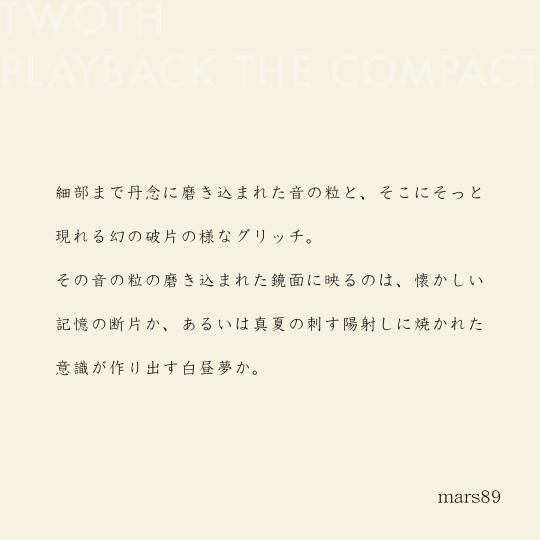
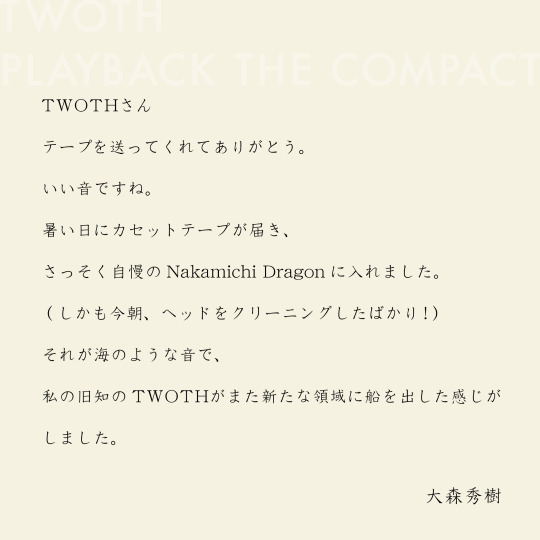
黒鳥福祉センターにてライブを開催します!
アンビエントからビートミュージックまで、自由にジャンルを越境するTWOTHのライブパフォーマンスは、9/23(金)、9/24(土)開演!唯一無二の音世界に浸る、必見のイベントをお見逃しなく!
予約して頂く方がスムーズに会場に入れます!
超限定のカセットテープなどの物販もありますので、皆様にお会い出来ると嬉しいです!!!
◉詳細&お申し込みは
https://playbackthecompact.peatix.com/
#若林恵 #Twoth #黒鳥福祉センター #音楽の実験
🔥尊敬する方々からのコメントから一部掲載🔥
緊張という糸と緩和という糸が絡み合い、互いを引き合いながらひとつの音の場を作り出している。
「都市の民族音楽的」ともいえるヴァナキュラーな風景が垣間見えることもあるけれど、ジャンルの定型にはまりこむことがない。
全体的な耳触りはポップで、日常にすんなり馴染む音でもある。
断絶の時代、多層的かつ調和の取れたTwothの音世界は私たちに安らぎを与えてくれる。
大石始(文筆家)
—————————————
90年代に自分にターンテーブルの使い方やスクラッチの仕方を教えてくれた友人『TWOTH』の2年ぶりのアルバムがリリース!
北海道のホテルで何故か早く目が覚めてしまったので、ベッドで聴いたら脳がマッサージされた感じがしました。
リリースおめでとう御座います!
ZEN-LA-ROCK
—————————————
細部まで丹念に磨き込まれた音の粒と、そこにそっと現れる幻の破片の様なグリッチ。その音の粒の磨き込まれた鏡面に映るのは、懐かしい記憶の断片か、あるいは真夏の刺す陽射しに焼かれた意識が作り出す白昼夢か。
mars89
—————————————
Twothさん
テープを送ってくれてありがとう。
いい音ですね。
暑い日にカセットテープが届き、
さっそく自慢のNakamichi Dragonに入れました。
(しかも今朝、ヘッドをクリーニングしたばかり!)
それが海のような音で、
私の旧知のTwothが
また新たな領域に船を出した感じがしました。
君がアニメーションとやってきたこととか、
どこか子供の音楽を内包していることとか、
神経質なおおらかさとか、
それらが一緒になった、
なにか遠近を感じる音でした。
この遠近は君がつかんだ何かなんだと思った。
最近、坂本さんの「新潮」にのった癌闘病記を読んだり、
身近な人の病気やら、死やら、そして比留間光の誕生やらあった。
そんな中、いま敢えて猛暑の「テクノポップ」と呼びたいこれが届き、
予期せぬ暑中見舞いで嬉しかったです。
ありがとう。
大森秀樹(tonkachi)
コメント頂けて嬉しいです...🙏🙏🙏
0 notes
Photo

#早くも #広告付き年賀はがき #エコーはがき の #ポスター が #出ていました ! #柴田町 さん、 #村田町 さん、 #そして今回初めての #大河原町 !! #デザイン ( #笑 )を #担当した人 は、 #一体誰 !? #白石川堤一目千本桜 #白石川堤一目千本桜植樹100周年 #千本桜を千年先へ #ひらせん (大河原郵便局) https://www.instagram.com/p/CimjkXFuG7F/?igshid=NGJjMDIxMWI=
#早くも#広告付き年賀はがき#エコーはがき#ポスター#出ていました#柴田町#村田町#そして今回初めての#大河原町#デザイン#笑#担当した人#一体誰#白石川堤一目千本桜#白石川堤一目千本桜植樹100周年#千本桜を千年先へ#ひらせん
0 notes
Photo

Renewal (๑´▿`๑)♫•*¨*•.¸¸♪✧ #adidas樹形 https://www.wajundo.com #和順堂苔縄医院 #医療法人清蓮会 #和順堂記念医院 #苔縄 #智頭急行 #鳥取 #上郡 #三ノ宮 #恋山形 #智頭 #明石 #相生 #姫路 #赤穂 #岡山 #スーパーはくと #佐用 #大原 #胃カメラ #大腸カメラ #プラセンタ注射 #グルタチオン注射 #高濃度ビタミンC点滴 #アンチエイジング #schefflera #salem #観葉植物 #もっとみどり #緑のあるクリニック (医療法人 清蓮会 和順堂苔縄医院) https://www.instagram.com/p/ChsHScvpWao/?igshid=NGJjMDIxMWI=
#adidas樹形#和順堂苔縄医院#医療法人清蓮会#和順堂記念医院#苔縄#智頭急行#鳥取#上郡#三ノ宮#恋山形#智頭#明石#相生#姫路#赤穂#岡山#スーパーはくと#佐用#大原#胃カメラ#大腸カメラ#プラセンタ注射#グルタチオン注射#高濃度ビタミンc点滴#アンチエイジング#schefflera#salem#観葉植物#もっとみどり#緑のあるクリニック
0 notes
Photo

樹突蛋白石發出的振動能疏通身上堵塞的能量,協調我們跟著自然的頻率生活,激活第三隻眼的脈輪,增強直覺,對世界的感知更加清晰,帶來豐盛的流動。 @mayatarajewelry #枝狀蛋白石 #DendriticOpal #歐泊 #閃山雲 #MayaTara #瑪雅塔拉 #樹枝蛋白石 #樹状オパール #枝晶蛋白石 #十月誕生石 #澳寶 #大顆枝晶蛋白石 https://www.instagram.com/p/CfSyWdxvfWH/?igshid=NGJjMDIxMWI=
1 note
·
View note
Text
no, miss appleton did not single-handedly ruin japanese soy sauce forever
there's a popular post going around this week about a ghq (general headquarters, the administration of the american occupation of japan after wwii) employee, a certain ms. blanche appleton, single-handedly changing the taste of soy sauce. while her story is fascinating for sure and i await further developments on the part of the op, and had a hand in the history of soy sauce, the premise is quite a bit exaggerated, and the general narrative so far in the framing by the op somewhat problematic.
tl;dr: as with most things, this is a confluence of factors, with producers, scientists, politicians, (possibly underworld,) and administrators all having their own agency in this story. i find it unusual to sideline so many parties in favour of presenting a single foreign administrator calling the shots in the op's posts.
i've made an initial response here. i will continue my findings in a separate post here.
1. jack daniel's is swill, but it's still whiskey
i think i can distill my issues with this plot so far down to one statement in the original post:
There should be records of her policies, there should be legal documents in America which record how she apportioned out American exportation of soy beans to Japan, there should be sources talking about this woman's ability to transform Japan's soy sauce production so heavily that today only 1% of all soy sauce is made with pre-WW2 traditional techniques.
this transformative impact of one administrator is entirely overstated. this comment led me to a promo blog post where some of the original claims can be seen, and the op mentions that traditional soy sauce was made in kioke barrels, and the this method of production has dropped to about 1% now. this is true, but it appears that at least one source put the decline as starting around the end of the edo period (xvii-xix centuries). [1] sources traceable to yamaroku puts the decline more recently, at about a century ago [2, 3]
this japanese paper on fermented food production is quite clear in stating that wodden barrel production declined from the meiji period (1868-1912) onward.
江戸時代までに一般化した木桶・木樽の使用形態は、明治期以降、一般の生活や各種製造現場で近代化が進む中、コンクリートや金属、プラスチック、合成樹脂等の材質によって代替されていく。
The use of wooden vats and barrels, which had become common by the Edo period, was replaced by materials such as concrete, metal, plastic, and synthetic resin from the Meiji period onward, as modernization progressed in ordinary life and various manufacturing sites. (deepL translation)
another source from a professor on food production in japan suggests that shodoshima (where yamaroku is made) is the area that has most completely preserved the wooden vat method of production.
this survey (oguri) written by a member of the national museum of nature of science in tokyo dates the supplanting of traditional method in more industrialized regions by 1913
1913(大正2)年:栂野は「最新醤油醸造論」の中で、九州、中国地方では桶の代わりに煉瓦又は石でタンクを作り使用していると記述。
1913 (Taishō 2): Tsugano, in his "The Latest Soy Sauce Brewing Theory," wrote that in Kyushu and Chugoku regions, instead of vats, tanks were made of bricks or stone and used. (deepL translation, p.148)
1918年:西二の蔵(ヤマサ印)の建設に当たり研究中の内面塗料が完成したので、これを採用し仕込桶を角型のコンクリートタンクに改めた。
1918: The internal [coating] that was being researched for the construction of the Nishi Ni no Kura (Yamasa brand) was completed, and this was adopted and the brewing vats were replaced with square concrete tanks. (deepL translation with edits from @literaryreference, see translator's note 3, p.148)
i think it bears repetition that soy sauce production was industrializing as japan was industrializing from the meiji to early shōwa periods. as alluded to in the title, a lot of modern soy sauce is like jack daniels: industrial products that evolved from traditional methods alongside a nation's overall development.
2. babe wake up, a new semichemical soy sauce just dropped, and appleton's role in history (a corroboration of @/inneskeeper)
it seems like the plot on the original poster's part has gone to the american side, so let's try to follow the us-japan interaction but from japanese sources.
the survey cited earlier (oguri) has a lot of information that supports the original post. blanche appleton did exist, and does appear in more anecdotes from that era of the soy sauce industry.
(also, this bibliography has more sources on her time in japan, will require institutional access to japanese universities)
to start, there are two methods of semichemical soy sauce production. the first, 新式1号法 shinshiki 1-gō method (i will call it sc1) was invented in the taishō era (1912-26).
大正の末期頃になると、酸やアルカリの化学薬品を併用することによって、速醸の目的を達成しようとする研究が盛んに行われ、その代表的な「新式1号」が出現する。
Toward the end of the Taisho era, there was a flurry of research into the use of acid and alkali chemicals in combination to achieve the goal of fast brewing, and the "Shinshiki No. 1" [sc1] appeared as a representative example of such research. (deepL translation, p.158)
in the time immediately after the war, there was a shortage of supplies, and its allocation was controlled by the americans
駐留軍の総司令部 GHQ(General Head Quarter)は、1948年の春調味料の原料として「エロア資金」(占領地域経済復興資金)により、大豆ミール2万tを放出する方針を打ち出した。このことにより、その配分をめぐって醤油業界とアミノ酸業界は熾烈な競争をすることとなる。
The General Head Quarter (GHQ) of the stationed army announced a policy of releasing 20,000 tons of soybean meal as a raw material for seasonings in the spring of 1948 through the EROA (Economic Rehabilitation in Occupied Area) Fund. This led to fierce competition between the soy sauce and amino acid industries for its allocation. (deepL translation with edits by myself, p.159)
the "amino acid industry" mentioned refers to the monosodium glutamate (msg) industry (glutamate is the ion of an amino acid). essentially, in the early 20th century, both msg and soy sauce (and chemical "soy sauce") production methods have converged to all requiring many soybeans due to their protein content and fermentation properties.
this is where appleton makes her entrance:
GHQは両業界の調整窓口として、「経済安定本部」の経済科学局で調味料と乳製品の需給を担当していたミセス・ブランシェ・アップルトンをその任にあてた。アップルトンは、醤油醸造協会の茂木啓三郎とアミノ酸業界の大内鋼太郎を招いて意見を聴取し、原料の配分を「醸造醤油2、アミノ酸業界8」とすることを内定し、上司のマーカット局長に報告した。この報告内容は醸造醤油にとっては死活問題であったが、内定の根拠は次のようなものであった。
GHQ assigned Ms. Blanche Appleton, who was in charge of the supply and demand of seasonings and dairy products in the Economic and Science Section of the "Economic Stability Headquarters," (?) to serve as the coordinating contact between the two industries. Appleton invited Keizaburo Mogi of the Soy Sauce Brewers Association and Kotaro Ouchi of the amino acid industry to hear their opinions, and informally decided that the distribution of raw materials would be two for brewing soy sauce and eight for the amino acid industry, and reported this to her boss, Maj. Gen. W. F. Marquat. The content of this report was a matter of life and death for brewers' soy sauce, but the rationale for the informal decision was as follows. [...] (deepL translation with edits by myself p.159)
essentially, appleton originally intended for only 20% of the soybean meal to be handed out for soy sauce due to its relatively inefficient usage of materials compared to msg production. this would've crippled the existing soy sauce producers, and they set out to find solutions to save their industry.
醸造醤油側は、醸造醤油の「日本人の食生活における重要性や醸造醤油そのものの品質の良さ」等を強調したが、GHQはただ「脱脂大豆が有効に活用されるのはどちらか」という尺度だけで判断したのである。このような醸造醤油の存亡の危機を救ったのは、もくもくと研究に携わっていた技術陣が開発した「新式2号法」であった。本法を発明したのはキッコーマンの館野正淳、梅田勇雄等である。新式2号の製法は新式1号と同様に、蛋白質を弱酸でペプトンやペプチド程度まで分解し、その後は麹の酵素により分解してアミノ酸の形態まで持っていく半化学、半醸造による醤油の製造法である。
The brewing soy sauce side emphasized the importance of brewing soy sauce in the Japanese diet and the quality of the soy sauce itself, but GHQ made its decision based solely on the basis of "which [industry] would use the defatted soybeans more effectively". What saved brewed soy sauce from the brink of extinction was the "New Formula No. 2 method" developed by the technical staff who had been working diligently on the research. The inventors of this method were Masajun Tateno and Isao Umeda of Kikkoman Corporation. As with Shin-Shiki No. 1 [sc1], the Shin-Shiki No. 2 [sc2] method is a semi-chemical, semi-brewing method for producing soy sauce in which proteins are broken down to peptones and peptides with weak acids, and then decomposed by enzymes from koji mold to the form of amino acids. (deepL translation with edits by myself and @literaryreference, see translator's note 4, p.159)
this development, the invention of the 新式2号法 shinshiki 2-gō method (sc2), led to another round of discussions:
ミセス・アップルトンは「キッコーマンが画期的な技術を開発した」ことを聞き、新法による醤油とアミノ酸液による化学醤油を消費者に提示し、その調査結果に基づいて決定を再考しようと上申書を提出した。醤油の 味、使用テストは神奈川県の鎌倉市と逗子で行われたが、消費者の8割が新法による醤油を支持した。この結果に基づき、アップルトンは両業界で話し合って結論を出すように「正田・大内会談」を開かせた。
Mrs. Appleton heard that "Kikkoman had developed a breakthrough technology" and submitted a petition to reconsider her decision based on the results of a survey that presented consumers with both the new method of soy sauce and a chemical soy sauce made with amino acid solution. Taste and use tests of soy sauce were conducted in Kamakura and Zushi, Kanagawa Prefecture, and 80% of consumers supported the new soy sauce. Based on these results, Appleton had the "Shoda-Ouchi Conference" held so that the two industries could discuss and reach a conclusion. (deepL translation, p.160)
this source seems to suggest that the original decision was under higher-ups' pressure:
当初の提案2対8のアミノ酸業界絶対優位の配分比率は、「新式2号法」の出現により、最終的にGHQは「正田・大内会談」の「7対3協定」を認め、ここに醸造醤油の歴史的危機は回避されることとなった。醤油業界のミセス・アップルトンの評価は従来大変厳しいものであったが、後の調査で彼女は醸造醤油の良き理解者であり、当初の配分比率も上司の強い指示に抗しきれず提案したものであったようである。再度の上申は、彼女の日本の伝統的な醸造醤油への深い理解と思い入れによるものであったと考えられる。
As for the proposed allocation of 2 to 8, due to the [sc2] method, GHQ ended up deciding on the “7 to 3 Agreement” from the “Shoda-Ouchi Conference” instead, thus averting the historical crisis of brewed soy sauce.Although the soy sauce industry had been very critical of Mrs. Appleton in the past, later investigations revealed that she was a firm supporter* of brewed soy sauce and that the original allocation ratio was a proposal she made because she could not resist the strong instructions of her superiors. It is believed that her renewed offer was due to her deep understanding of and commitment to the Japanese tradition of brewed soy sauce. (deepL translation with edits from myself and @blackamite, see translators' note 1, p. 160)
the term 良き理解者 "good friend" (see bolded) i think could mean connoisseur or enjoyer here, will need help in clarifying.
その後醤油醸造協会の正田会長は、1948(昭和23)年7月23日に「新式2号法」の特許公開を懇請し、当時の中野社長の決断により、「新式1号」に続いて「新式2号」についても無償で業界に公開されることとなった。同年8月から講習会が全国12ブロックで開催され、約2,500社の業者が技術を習得した。
Later, on July 23, 1948, Mr. Shoda, president of the Soy Sauce Brewers Association, requested that the patent for the [sc2 method] be made public, and following the decision of then [Kikkoman Inc.] President Nakano, the [sc1 and sc2 methods] were made public free of charge to the industry. In August of the same year, training sessions were held in 12 blocks throughout Japan, and approximately 2,500 companies learned the technology. (deepL translation with edits by myself, p.160)
the main sources the survey used are a manuscript, 醤油醸造技術の近代化 by 永瀬一郎 Ichirō Nagase, kikkoman inc.'s own historical record (キッコーマン株式会社八十年史; a shorter version can be found here), and a history of choshi shoyu inc. (銚子醤油株式会社 社史). i think this confirms a lot of information the original post put out there about ms. appleton and her involvement with soy sauce. plus, it shed more light into how exactly she interacted with the condiment industries.
perhaps @/inneskeeper will find some shady dealings in their research; when you mix a foreign military force, the collapse of existing institutions, and social upheaval, you're likely to find corruption. ill keep my eyes peeled for that development.
3. no, kikkoman is not "fake" soy sauce, but you might be able to find some echoes of the past
so what happened to semichemical soy sauce now? the survey document does not track its usage after its invention and at the surface level, it seems that the original claim was right, the semichemical method has persisted since the american occupation and we're all just drinking sussy sauce.
in fact, this seemed so obvious that this rumour circulated in japan and was debunked by aficionados two years ago.
the link to kikkoman's own record earlier states that sc2 sauce was discontinued in 1970, and the japanese blog post above repeats that, adding that it has reverted back to honjōzō (本醸造) sauce. this paper in the journal of the brewing society of japan (日本醸造協会誌) has this to say about what became of sc2 sauce:
また,キッコーマンの新式 2号しょうゆ製造法の特許が公開されたのも 1948年で, しょうゆ業界は混合醸造しょうゆおよび混合しょうゆを製造することにより効率よく旨味の強いしょうゆを安価に製造し, しょうゆ原料不足の時代を乗り切ったと考えている 。現在,大手メーカーでは食の安全性や本物志向から混合醸造しょうゆおよび混合しょうゆの製造をやめ本醸造しょうゆだけを製造している 。一方,全国の中小しょうゆメーカーでは,製造設備を全て本醸造しょうゆに切 り換える資金力に乏しく.一旦,消費者に定着した混合しょうゆのニーズにより本醗造しょうゆに切り換えることが出来ず,現在も混合しょうゆが主力商品となっているのではないかと考えている 。
The patent for Kikkoman's new [sc2] soy sauce manufacturing method was also published in 1948, which allowed the soy sauce industry to overcome the shortage of raw materials for soy sauce by producing mixed brewed soy sauce and mixed soy sauces efficiently and inexpensively. Currently, major soy sauce manufacturers have stopped producing mixed brewed soy sauce and mixed soy sauce, and are producing only honjozo soy sauce, due to food safety and the desire for authenticity. On the other hand, small and medium-sized soy sauce manufacturers nationwide do not have the financial resources to convert all of their production facilities to honjozo soy sauce. Once a demand for mixed soy sauce has taken root among consumers, they are unable to switch over to honjōzō soy sauce, and even now, it's possible mixed [kongō or kongō-jōzō] soy sauce might be the top [soy sauce] product. (deepL translation with edits from myself and @literaryreference, see translator's note 2, p.78)
the three types of japanese soy sauce production methods available today are honjōzō (本醸造, fully fermented), kongō-jōzō (混合醸造, mixed fermented with amino acid added prior to fermentation, closest to sc2 method), and kongō (混合, one of the previous two types with additives). [wiki, academic source] these production methods are in parallel to the traditional varieties of sauce, which rather describe the mash and added taste; these elements of the production, rather than the fermentation process, are usually what define the lineage of the sauce in both japan and other soy sauce-producing cultures.
instead of supplanting "genuine" fermented soy sauce, the industrial descendants of sc2 sauce have become their own type of sauce and have carved their own niches in the consumer market. as someone who is not from japan, i would be careful about making any judgment on whether it is "authentic".
4. clarifications
there were a few statements by the original poster that i think need further context for a more accurate understanding. any bolding and italics are mine.
During World War 2 there was a push to industrialize the Japanese soy sauce industry to be better for mass-production. This innovated the chemical fermentation technique and the semichemical fermentation technique utilized by Kikkoman; rather than ferment for four years in gigantic cedar barrels, kioke, instead fermentation takes place for six months or a year in stainless steel barrels which utilize electrolysis to artificially speed up fermentation processes.
the first part is correct, but the word "rather" introduces a false dichotomy; soy sauce production is very diverse and progresses at different paces in different regions (see part 1 of this post). the sauce op has is simply one from a region that has kept their manufacturing method unchanged.
"four years" is arbitrary: different producers have different fermentation periods.
the last part of the statement is not universally true of industrial production; ac current may be used in brewing.
A single American woman named "Ms Appleton" was given total control of apportioning all American soy bean rations to companies, how much, and to who. She had no knowledge of soy sauce, allegedly.
we can lay that last part to rest. it appears that she does. i will also have to mention that "soy sauce" has been imported from china to the usa since the 30s.
She apparently had so much power over Japanese soy sauce production that she could singlehandedly shape its future by threatening to not give soy beans to any company, family, or factory which did not utilize her specific requirements of semichemical fermentation (reduced from chemical fermentation, since it was that abhorrent). These days, the term soy sauce is distinct from traditional shoyu, and requires distinguishment because of such a radical difference the two products are.
is girlboss applesauce really that powerful on her own? this statement was not wrong, but she did have the military that just nuked japan behind her.
did appleton specify one method over others? probably, but i think the dependency went the other way: the invention of sc2 sauce was the only way the industry could be efficient enough for ghq standards.
that last part is just straight up wrong dawg what the hell
i was nicer in my first reply but im not feeling it today
[...] Because there should be way more information on her if this was the case; she was apparently powerful and influential enough during the occupation that she could singlehandedly enforce whatever arbitrary rules she wanted on the soy sauce industry and they had to comply or else have no product at all. That level of power is fucking insane. Imagine having so much raw influence over Japan that you could order them to completely renovate and change how they produce and make SOY SAUCE, literally one of if not THE most important thing in Japanese culinary history--[...]
holy exaggeration batman, this is almost insulting. as with most things, this is a confluence of factors, with producers, scientists, politicians, (possibly underworld,) and administrators all having their own agency in this story. it is incredibly unusual to sideline so many parties in favour of a single foreign administrator calling the shots.
5. what now?
i think there's much to be found out about appleton's dealings, and it would be an interesting story if there did end up being underworld dealings in those negotiations coming to light. i think it is a fascinating slice into that era and how society and institutions interacted in such a fraught situation. overall, i encourage @/inneskeeper's historian work.
that said, it is very important for people to not put a narrative ahead of the facts. i think it is human nature to be attracted to stories that have a clear causality and linearity, but it is something we need to be very careful about when communicating history to a large audience. to anyone who would like to present their findings, consider what your framing of events imply about the state of the time and place you research, and if you are doing all parties justice.
and for the love of god, cite your sources.
if there are any translation issues, please reach out to me and i will edit accordingly and post errata.
erratum 1: jack daniel's is tennesee whiskey, not bourbon, thanks @drdementogrl.
translators' note 1: 良き理解者 could also be translated more literally to “good understander,” thank you @blackamite, @monstrousgourmandizingcats, @leatherbookmark, and others who have given similar notes.
erratum 2 and translator's note 2: @literaryreference has indicated that 一旦,消費者に定着した混合しょうゆのニーズにより本醗造しょうゆに切り換えることが出来ず,現在も混合しょうゆが主力商品となっているのではないかと考えている 。 is more equivocal and did not state an outright larger popularity for kongō/kongō-jōzō type brewing, so it's possible it might be the top product. they also suggested removing redundancies and pointed out a copying mistake from the original source (left out a bit of the japanese text).
translator's note 3: @literaryreference let me know that 塗料 would more accurately be interpreted as "coating" and also gave me a link of the sauce brand mentioned.
translator's note 4: @literaryreference has provided a better translation for GHQはただ「脱脂大豆が有効に活用されるのはどちらか」という尺度だけで判断したのである, and i have made edits from their translation as well for better context.
4K notes
·
View notes